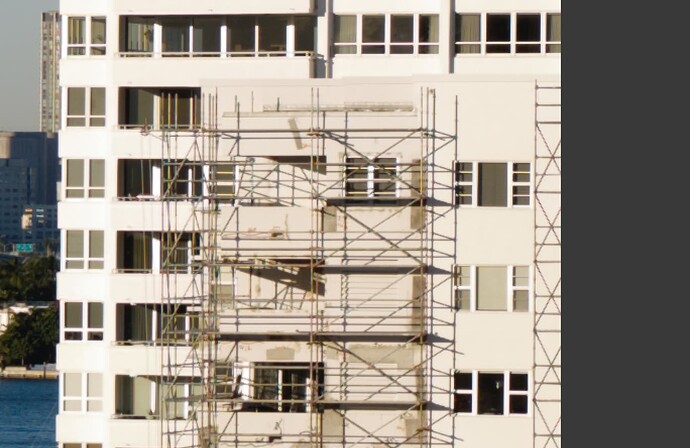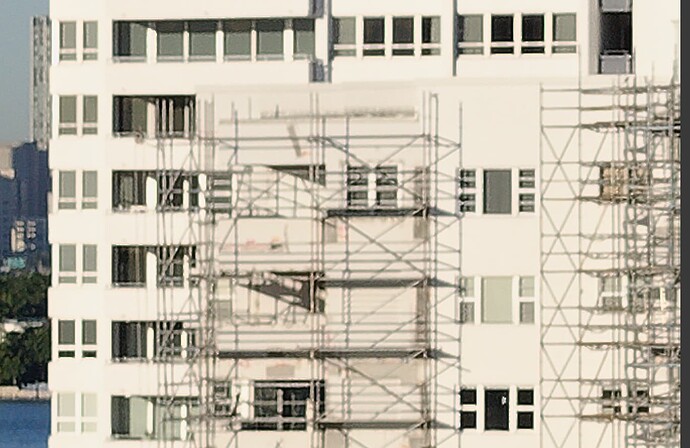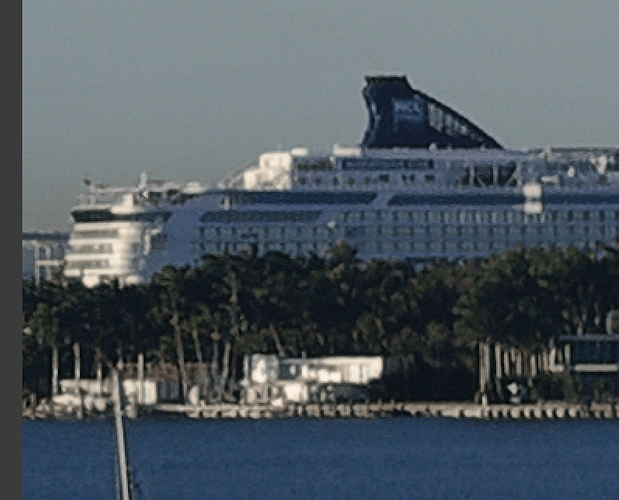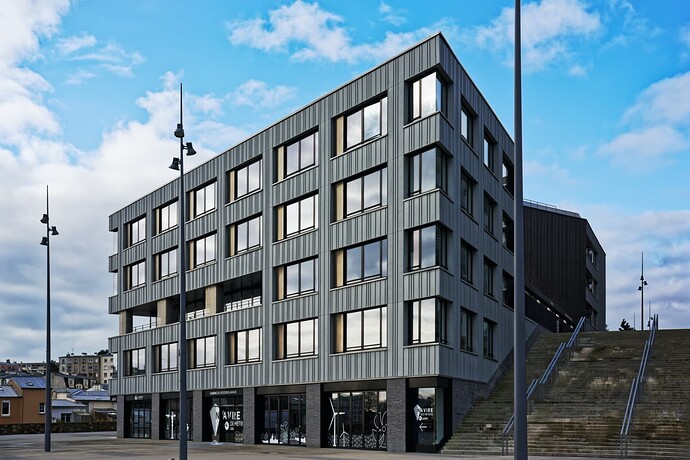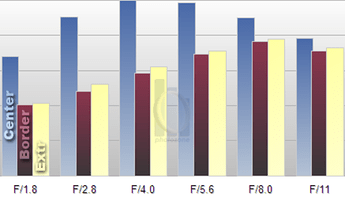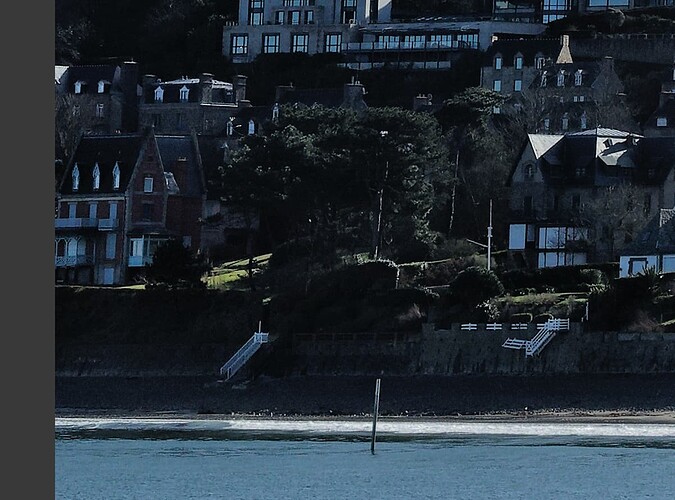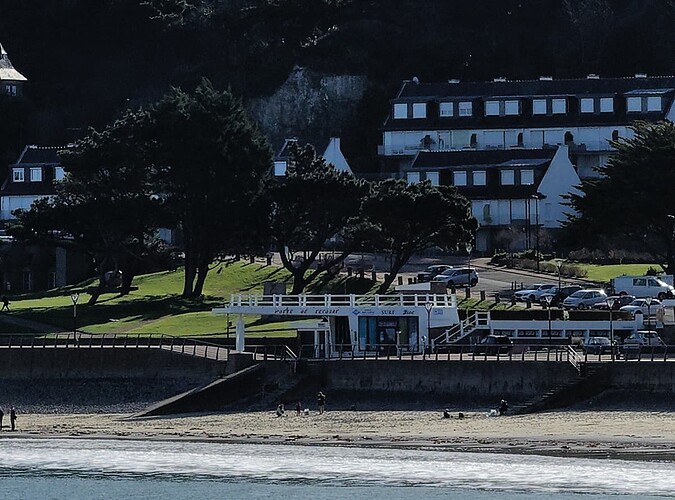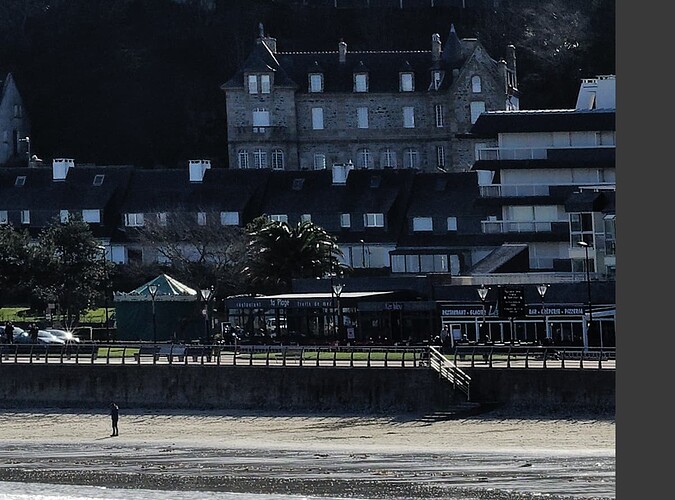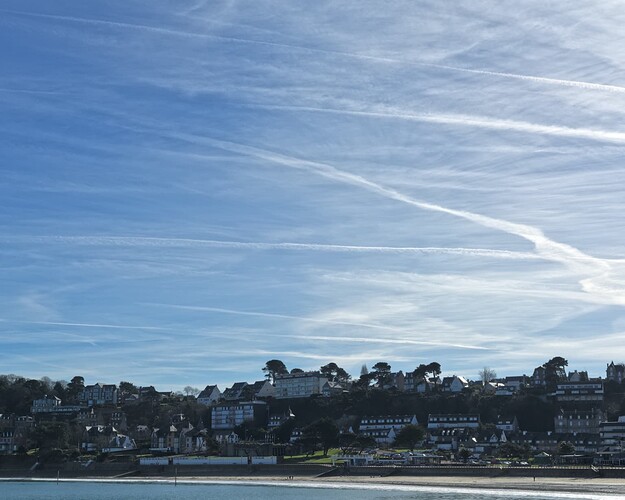George
Hi
I don’t disagree. English is not my native language as you may have guessed, and complicated for me to have nuances in my expression.
Optimizing use of your gear by pixel peeping is quite understandable. Changing gear just because when you zoom at 400% you think one gear gives better result, well, it can be qualified as “technical obsession” (or sharpness addiction), and won’t make the picture better to my mind, unless you are in a scientific use of photography. Personnally (and i underline it is a personnal view), i won’t make a better picture if you offer me a fuji GFX 100 or other medium format. I will just have, i suppose intellectual satisfaction to shoot with expensive gear. Better low light performances, probably but for the type of pics i shoot, i am not limited so far by my modest G9, with prime lenses, which will not satisfy other members of this forum.
Can give you my personnal address if you want to send me the fuji (with a top of the art computer to manage the files). 
@Man Sorry I don’t have a Fuji to “give” you just a G9, EM1 MKii and GX80 (and actually I am not offering any of them either) mostly with zooms but the GX80 has an Olympus 17(34)mm f1.8 attached most of the time (and an Olympus 12-50mm power zoom with pseudo-macro from time to time).
So not everyone is able (or willing) to afford the higher end cameras but actually believe that the features of the equipment that they have meets their requirements. Yes I do pixel peep from time to time but mostly to find out where I might have gone wrong when taking photos, sharpness, depth of field etc. but not composition etc…
Excuse me! 
Real MF cameras (film) start at 6cm x 4.5cm, then go through 6cm x 6cm, 6cm x 7cm, 6cm x 9cm, 6cm x 12cm, right through to 6cm x 17cm.
There is no way 4.4 cm x 3.3cm qualifies in my mind as MF - it’s barely half of 6cm x 4.5cm. Possibly we should call it HMF (half medium format) 



Interestingly, the right side of the Nikon image seems softer than the left. I remember noticing this previously and wondering if the lens mount might not be perfectly aligned.
Leica…
Nikon without sharpening…
Nikon with added lens sharpness and a grad filter with added sharpening…
Left side
Leica…
Nikon no sharpening…
These seem much more similar in sharpness than the right side
That’s what I also noticed. And I remember @mikemyers talking about one of the bodies having or had (?) a problem. IF related to the body, then it also influenced the test pic he took some time ago with an older 35mm lens. *)
To find out, Mike might take comparison shots with the same lenses on all Nikon bodies, he owns. The different megapixel count between D750(s) and DF doesn’t matter.
*) edit
I think, I had one of your balcony shots taken with AF Nikkor 24mm f/2.8D in mind.
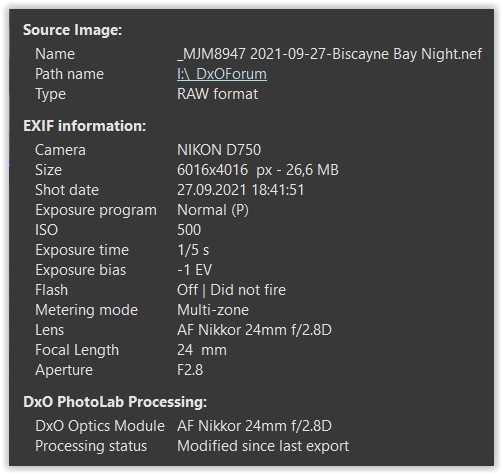
How about “FF extended”? Or “nearly double FF”?
This time, an example from me. Taken in Brest, France on a day when the sky was partially cloudy. A balance between brightening up the image without blowing the highlights
Nikon D810, AF Zoom Nikkor 28-300mm f/3.5-5.6G IF-ED lens (42mm), ISO 1000, 1/1000sec @ f/10
…interesting combination or a typo?
What are you telling us with your image?
It was one of those days when I needed to have stability whilst composing an image without a tripod, with a view to using ViewPoint to rectify the verticals.
I was confident that PL could remove any noise problem, so I could concentrate on getting the exposure right as well by exposing for the brightest windows by placing that spot exposure at +2 stops above 0EV.
The only local adjustments were Control Points on the sky (processed before PL5) and a Control Line for the dark building on the right to bring out the shadow detail (using PL5)
The lens with the right-side-focus-issue was my 24-85 Nikon Zoom. I sent it back to KEH, who were unable to fix it, and sent it back to Nikon where they made a whole “laundry list” worth of changes, including the “firmware”, which I didn’t know even existed. I used the 24-85 for the first time yesterday on my Df, and it had no issues. In the meantime, none of my other lenses has been having this problem on either of my D750 bodies.
So much to respond to - just got home, need to make brunch, then return to the computer.
Yes my mistake, i read ealier this debate about the Fuji. I will accept any medium digital format camera (does it exist ?) you’ll send me, or even just a D850 
As they say - you’ll have to prise it out of my cold dead hands 
Perhaps I need to do this test in a more controlled manner, but even when I did the test as you describe (but with my Leica lens, not a Voigtlander), my test was on the license plate of a car on a nearby parking structure, and the Leica lens showed much sharper numbers on the license plate. On the two comparison photo I posted up above, there is a building just to the right of the pillar, with a 'stepped" area on top. No comparison here, the lower image with the LANTHAR is shows more detail than the 50mm Nikon lens, with both images viewed at 100%.
With my 200% images, with the LANTHAR on top, it shows detail where the Nikon lens shows a blur.
I’m not comparing bodies, only the lens. Both cameras have a good 24 megapixel sensor, and while there is a huge difference in camera prices, the Leica lenses cost thousands of dollars more than comparable Nikon lenses. The Voigtlander is sort of in the middle, and I just watched a comparison video of an $8,000 Leica lens compared to the $1,000 Voigtlander. The Leica was better, but they were very, very close.
My original photos were both raw images, not jpg, and I have only been considering the out-of-camera results, no sharpening.
I used the built-in metering of each camera, no adjustments.
My only “converter” was PhotoLab 5
I suspect the D750 body and the M10 body will give similar results. The topic here has been the lens. I may be able to put my Nikon lens on the Leica, with an adapter I bought that allows this, but I could never put the Leica lens on the D750 as it would be too far away from the sensor.
I agree with you completely, but there are times when I do want to create the sharpest image I can, and I doubt I would use the $200 or so Nikon kit lens. I think the older Nikon 50mm lenses were better, and a lens review confirmed that, but I don’t think I have an AI 50mm Nikon lens. I probably do have a non-AI 50, which I can mount on my Nikon Df, but not on the D750.
I set the camera to DNG, and opened it in PhotoLab 5.
Back when I bought my Nikon D610, for so little additional money I got the lens added on as a “kit” from B&H at a good price. Then I sold the D610 later, and bought the D750. Your AF Nikkor 50mm f/1.8D is highly recommended. Here’s what Ken Rockwell had to say about my lens: …Not for: Rich people who just don’t feel right unless they pay a lot of money for something, or people who need no distortion, for whom the Nikon 50mm f/1.8 AF-D has less distortion for half the price. Otherwise, everyone needs some sort of 50mm f/1.8 and not much more. …bottom line, I now know that buying this 50mm was a mistake. I wasn’t aware of this before. I messed up. 
Based on the foliage, the upper photo here (Nikon) looks better.
I agree, but when I reach for a camera, all these factors apply to which of my cameras I select. For “static” shots, there is no need for a rangefinder, and while on the Leica I might use my Visoflex, I might as well use my Nikon which is better as a dSLR. I doubt it makes much difference in the end result. For a “walkabout” camera, the smaller Leica M for me is definitely a preferable choice. I expect I would get decent results with either, and I also expect @Joanna would get better results with the Nikon.
OK, will take photos in the morning (if it’s sunny and clear) with the 50mm lens on the D750, my second D750, my Df, and my M10. I assume you want me to use something close to wide open, for minimal depth of field, or should I just select f/8 ?
Shoot a series of images taken with apertures from wide open to max. closed. Don’t change focus (use manual focus) and see what you get… Most lenses have resolution characteristics where you cannot have best sharpness from end to end without sacrifice, like shown here in a graph from this page.
While you get best centre resolution at f/4 in this example, borders get better around f/8. @Joanna’s recommendation for f/10 for best DOF without getting into diffraction bog absolutely makes sense, e.g. for landscape type of photos, where you want everything in focus.
Other than that: Check out lesson 1 here.
That’s a lot of work, when I just want a simple answer. I already got my answer, and I probably ought to do something I first thought about years ago - replace my “kit” 50mm Nikon lens.
I can spend $200 quite easily.
I can spend $1.000, like with the Voigtlander, but only after a lot of thought and soul searching.
I can’t spend $8,000 for the Leica lens, for that tiny bit of improvement over the Voigtlander.
My most used focal length on the Leica is probably 35mm, and I’ve got the 1960’s Summilux which I’ve been happy with.
On the Nikons, I used to walk around with a 24mm lens, as I don’t have a dedicated 35mm. If I was smart, I’d buy a (hopefully) small, light weight 35mm lens, no larger than my 24mm.
As to the ultimate sharpness and everything that goes with this, I feel that way when I view landscape type photos from @Joanna and want to accomplish the same thing. Sharpness is not required to create a beautiful photography, but in the photos Joanna has already posted, with all the details tack-sharp, that’s important to me. I’m no Ansel Adams, but I love his photography, and it has influenced me tremendously over the years. For better or worse, I want my 24megapixel images to be able to look good at 100%, but this doesn’t apply to my walking around with a camera, hunting for scenes that look interesting.
This thread started off about "dull, gray-sky images, and when those images look blurry, the result is usually awful, at least for me. But when the details are really sharp, that can make a huge difference.
I just took a back-lit photo of a sailboat in Biscayne Bay half an hour ago, no brightness, no color to speak of, just the boat on the water, with city stuff behind it. In my mind, I pictured what I want in the photo. I’ll find out in the next hour or two if it worked. Camera was on tripod, with 135mm lens, focused at infinity, and cracked for different exposures.
I guess what I’m really trying to say, is I don’t have to make every photo I take “tack-sharp”, but I want the ability to do so, when it is something important to me. Make sense?
An even simpler answer is to stop chasing “ultimate” sharpness and accept that, for landscape shots like you are taking, for being seen on nothing larger than a monitor, what you have is more than adequate, as long as you use the right techniques when taking the shot and processing it.
You really need to concentrate more on things like using the right aperture for the focal length and subject. For example…
You want to take a shot across the bay with a 135mmm lens and, because you read somewhere that your lens is sharpest at f/5.6, that’s the aperture you set.
Now, because the other side of the bay is “a long way away”, you naturally set the focus to infinity.
Question - what is the nearest distance that anything will be acceptably sharp?
Answer - 111m (364ft)
This is using a blur circle of 30µ, which is plenty good enough for a reasonable size print viewed at arm’s length.
But you want to get ultimate sharpness from your camera, avoiding as much diffraction as possible, so you calculate that the blur size equivalent to twice the pixel pitch of your sensor is 12µ and you enter that into TruDoF-Pro and it gives you - 345m (1132ft)!!!
Which now starts to explain why, at 200% magnification in PL5, the white building to the right of a lot of your shots is starting to look soft.
Because you want to have “tack sharp” and follow dubious advice about optimum aperture from reviews that usually only test for centre sharpness on a static target, you might achieve that sharpness in the centre of an image but, as @platypus mentions, this is never going to cut the mustard for an expansive landscape shot.
Even with the most expensive Leica lens, you are never going to get that “tack sharp” appearance over the whole image without using the right lens at the right aperture to give you the right DoF.
However, things get better if you use hyperfocal distance instead of infinity.
By focusing on infinity you lose half the possible depth of field - the part beyond infinity.
A quick example is that, by using 20µ as the blur circle (which gives me sharper detail), with a 28mm lens, if I set the focus to 5.28m (17ft) I get everything from 2.6m (8ft 6in) to infinity acceptably sharp. This number is burnt into my brain so I don’t even have to use the calculator.
With a 50mm lens, you would need to focus at 16.8m (55ft) to get everything from 8.4m (27ft 6in) to infinity acceptably sharp.
But, no matter what the aperture, you are only ever going to get one distance truly sharp, or at least, as sharp as the lens allows.
Why LF shots are so stunningly sharp is because we can “bend” the camera to place the plane of focus almost horizontally instead of being restricted to a vertical “sandwich” of soft/sharp/soft. Using the Scheimpflug principle, we get a wedge of acceptable sharpness that starts under the film plane and widens as it goes away from the camera. This means everything within that wedge will be sharp, no matter how far away from the camera.
Unfortunately, small format cameras can’t do this and even tilt/shift lenses can be very difficult to work with because of the micrometric adjustments necessary, compared to working across a 5" x 4" sheet of film.
Before you rush off buying even more glass, I would suggest you run some exercises in DoF and hyperfocal distance with the lenses you have, especially on the Nikon. The 50mm Nikkor you already have is more than likely no worse than my 28-300mm and I can get stunning front to back sharpness with that, as is evidenced by the images I have already posted.
Oh, and concentrate on fine tuning the lens sharpness tool and using the fine contrast sliders in PL5 - this is a way to increase apparent sharpness, no matter what the lens.
Here are three screenshots (at 100% in PL5) of the left, middle and right parts of an image taken with my 50mm Nikkor at f/10…
And here is an export of the whole image…
@Joanna I agree with the use of the ‘Fine contrast’ tool but on Win10 (and I suspect Mac) you have to buy DxO Filmpack as well! ‘Fine contrast’ in particular should be part of the PhotoLab or available as a cheaper add-on than the whole of Filmpack most of which I don’t need (or so I currently believe).
The proper answer depends on the question. My question was how the lenses compare in terms of visible sharpness, not how sharp I could make them appear by using specialized techniques. The different parts of Miami in my photo mostly range from one mile to two miles away, with the building at the right a bit closer. For all these subjects, setting the camera to infinity seemed valid, so I needn’t worry about depth of field.
I understand the other points you made, and as a photographer, trying to get a good image, they are all obviously correct, and appropriate, and what I ought to be doing in my photography - but they are irrelevant regarding my simple purpose for the photo, which was to look in the middle of the image and compare which lens showed the most detail.
(I just finished taking the same image with my Nikon 50mm lens on my original D750, my repaired D750, and my Df. Then I took it with my Leica and Voigtlander lens, first at the settings suggested by the camera, which has a different type of metering, and then at the same settings as I had used for the Nikons. All were shot eventually at ISO 200, 1/500th, f/10, on my tripod, and those are the images I’ll process.)
Nope, with a longer lens, I prefer a faster shutter speed. Just a habit, for better or worse.
That’s good information, but “acceptable” depends on too many things, and is a very important thing to consider, but was irrelevant for my original question.
Not very scientific, but I’ve gotten in the habit of not closing the lens down to more than f/11 as for my cameras and lenses, I don’t think diffraction will be a problem. I assume it will be at f/22, and it might be at f/16. Given the choice, I try not to shoot stopped down so much. You’ve got precise answers, and I just have “gut feeling based on experience”.
For what I’ll call “real photography”, all of this is true, and most of it looks far too complicated for me to start doing. Obviously, I should take some time, read up on it, and then I’ll eventually understand it as well as I do most other things. Even if I don’t need to do it, I would like to learn it. I have a completely free day today - nothing on my schedule. Maybe after I do my “homework”, posting the images from this morning, I will look Ito all of this. I will start a new thread in which to ask my inevitable questions, and hopefully you’ll have time to answer, and maybe, starting at a very basic level, by this time next week I’ll understand.
I do know and understand this, for the reason you posted. Long ago, I used to look at the depth of field scale on my lens, to make an educated guess at where I should set the focus. I get more serious about this when my camera is on a tripod. I know from personal experience that my most important “issue” is camera shake, as I’m not as steady as I once was. I often grasp the end of my lens to stabilize it, and I usually select a higher shutter speed for the same reason, which results in a wider lens opening, and less depth of field. I’ve got other ways that help, like tension in the camera strap. As I get older, this will continue to get worse. 
Not quite. I think you mean “acceptively sharp”, and “sharp” means one specific distance. But I sort of think I understand what you mean… Scheimpflug principle??? This can go in the new thread I will get around to starting, but I’ll start out with “simple” thoughts.
I’m not in a rush to buy any more lenses - the new tele zoom for my Nikon arrives today, and I have lots of reasons to agree with you about that lens - many of which concern the weight. Many years ago, when I was still shooting race photos for magazines, I started to hate my 80-200 Nikon lens, despite the fantastic results it gave me. It was just too big and HEAVY. I bought an 80-300 Nikon lens used from B&H for only $90, and while it wasn’t as sharp and clear, I enjoyed the low weight. I didn’t like the results, so I gave it to my brother, who loves it. For magazine photos, it was acceptable, but for posting images on the internet, it was far too limiting. This newer lens seems to be extremely capable.
Other lenses? I’ve been thinking about getting another Vogtlander 35mm APO-LANTHAR for my Leica, which again, everyone raves about, but it is bigger and heavier than my 1960’s 35mm Summilux which I have been very happy with. For “walkabout” photos, the Summilux is fine. If I wanted to shoot landscape photos like what you often do, I’d have already spent the $1000 for the Voigtlander. As for the Nikon, buying a 50mm f/2 or f/1.4 like yours would be a very inexpensive transaction. I suspect it would be better for me than the “kit lens” I now have.
I think I had this lens, long ago, but it was for my Nikon F4. The only version I can find now is my non AI lens, which would work on my Nikon Df. I have a 24mm Nikkor that looks just like this lens. Every place I’ve checked for 50mm Nikon lens quality seems to prefer the older (metal) design. The new lens does have a built-in focusing motor thought, which is very fast. I’ll just sit on this thought for a while, but I’m very tempted.
This probably belongs in a separate discussion - is there any such discussion currently in the PL forums on HOW TO INCREASE THE APPARENT SHARPNESS OF AN IMAGE BY USIGN PHOTOLAB TOOLS ???
If not, I think I will start a discussion later today. Getting a good sharp image in-camera is one thing, but apparently these tools can help enhance sharpness for people viewing the images. I’ve used Topaz Sharpen AI to improve blurry images, but I’ve never yet tried to use PL tools to enhance sharpness.
